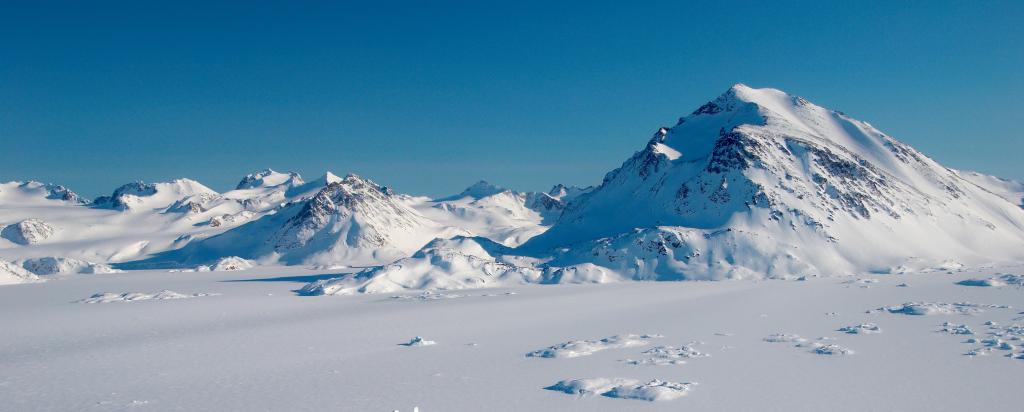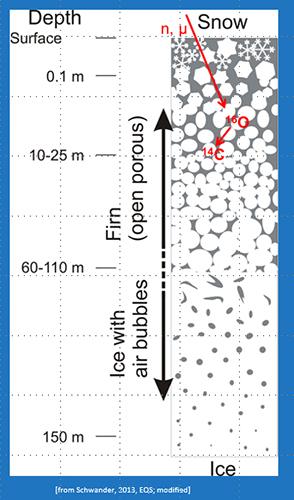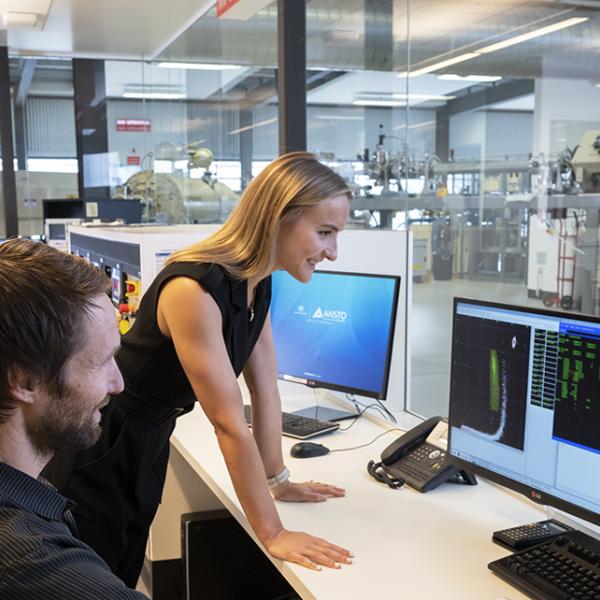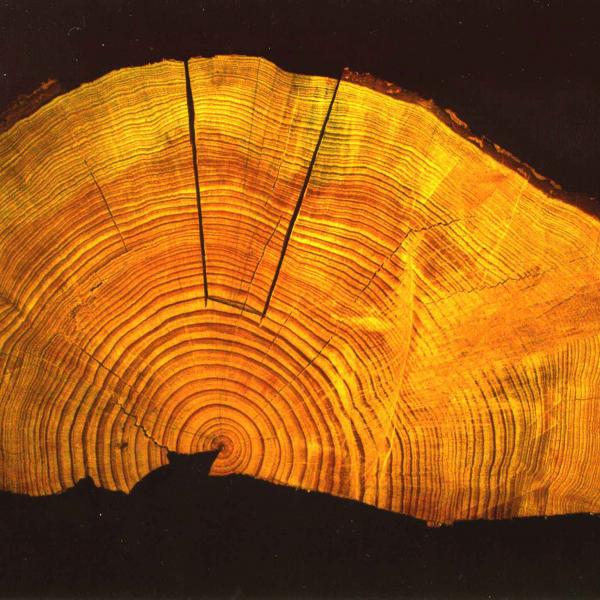

Published on the 18th October 2024 by ANSTO Staff
Key Points
-
The study elucidates how in situ cosmogenic radiocarbon (14C) is produced, retained and lost in the top layer of compacting snow (the ‘firn layer’) and the shallow ice below
-
The findings have implications for all measurements involving 14C in ice sheets
-
ANSTO scientists undertook radiocarbon measurements at the Centre for Accelerator Science to support the research
ANSTO scientists, Dr Andrew Smith, Dr Quan Hua and Dr Bin Yang have contributed to an important new paper that elucidates how in situ cosmogenic radiocarbon (14C) is produced, retained and lost in the top layer of compacting snow (the ‘firn layer’) and the shallow ice below at an ice accumulation site in Greenland.
The findings that were published by a large international team led by the University of Rochester (US) in The Cryosphere have implications for all measurements involving 14C in ice sheets.

“Atom hunter” Dr Smith has a longstanding collaboration with A/Prof Vasilii Petrenko and the team at the University of Rochester, extracting trace atmospheric gases from Arctic and Antarctic ice cores, mostly to improve our understanding of the past global atmospheric methane budget.
This recent research has implications for interpreting isotopic measurements of carbon containing gases such as CO (carbon monoxide), carbon dioxide (CO2) and methane (CH4) extracted from past air trapped in the firn layer or deeper in ice core bubbles.
“The radiocarbon component of these gases, 14CO, 14CO2 and 14CH4 provides invaluable insights into the movement of carbon in the carbon cycle. This is particularly important for methane, as this gas is currently contributing approximately 23% of the global warming we are experiencing,” explained Dr Smith.
“Because methane has a relatively short lifetime of about nine years in the atmosphere, mitigating our methane emissions will have a much quicker impact on climate change than for carbon dioxide. Methane is mostly removed from the atmosphere by a very reactive compound, the ‘hydroxyl radical’, OH,” he added.
Measurement of 14CO allows us to understand how this very short lived ‘detergent of the atmosphere’ has changed on global scales in the past. Read more. The team is conducting similar work now in the contemporary atmosphere, under the umbrella of the FETCH4 project, funded by VESRI, a Schmidt Sciences venture.
The amount of carbon that can be extracted from these gases, which are in turn extracted from the air in the firn or in ice core bubbles, is minute. Even with the relatively massive samples the team extract in the field, sample sizes are of the order of tens of micrograms of carbon, or less.
“The micro-14C capability of the Centre for Accelerator Science is essential for the success of this very challenging and important work. The techniques and trust developed by the research team over decades is also crucial, “ said Dr Smith
He first started measuring 14C of CO2 in firn and ice air back in the late 90’s as part of a National Greenhouse Advisory Committee project. Compacting firn traps air as bubbles in ice. Until then, the air is still in still contact with the atmosphere, through increasingly tortuous paths the greater the depth.
Closure is gradual over the transition region. For this reason, the air is always younger than the ice that contains the bubbles and there is an age spread, different for each gas due to different diffusion coefficients. This process needs to be understood and ‘run backwards’ with models to interpret the air record trapped in the bubbles.
“It turns out that the ‘radiocarbon bomb pulse’, produced by above ground nuclear testing in the 50’s and 60’s, provided a sharp and well-measured pulse of 14CO2 in the atmosphere. Measurement of this in firn air and ice core bubbles proved useful in tuning the numerical modelling that describes the air trapping process, and we have since used this same technique at numerous sites,” said Dr Smith.
However, it became apparent at the time that the production of 14C in the ice itself, by the interaction of neutrons and muons with the oxygen atoms in the H2O, needed to be understood to develop a complete picture.
“This has eluded researchers until now as the different air extraction techniques, melting, grating, milling and subliming the ice gave rise to different ratios of atmospheric and in situ14C and the choice of site, whether an accumulating ice sheet or an ablating ice sheet, also yielded different results.
“A detailed understanding of the in situ cosmogenic 14C production, retention and loss in ice is needed to disentangle the trapped atmospheric and in situ cosmogenic components”, explained Dr Smith.
“Interestingly, we are about to use this new knowledge to embark on a very ambitious project, in a remote Antarctic site, over 1000 km from the coast and 3 km above sea level on the Antarctic plateau,” he said.
“A team of six are about to travel to Dome Concordia where they will drill ice cores at this specially selected site between November 2024 and February 2025 and melt the ice to liberate the air it contains. Due to the very low snow accumulation rate at this site, the in situ 14C signal will dominate over the atmospheric signal.
“Measurements of the 14CO at the Centre later in 2025 will enable us to reconstruct the flux of high energy cosmic rays over the last 7000 years, knowledge which has been inferred from studies of meteorites until now. We expect our work to greatly improve upon this. The team need to complete the work before winter, as temperatures plummet to -70 °C or below”.
Gas diffusion in firn and in situ14C production
The compacting snow (‘firn’) is porous and is gradually compressed into ice, occluding the air into bubbles that then move downwards with the ice. The trapped air contains 14C from cosmogenic production in the air as 14CO2, 14CO and 14CH4. However, 14C is also produced in situ by neutron (n) spallation of O atoms in the H2O (ice), slow muon capture (𝜇-) and by interactions with fast muons (𝜇f, > 10GeV). Neutron production occurs only in the top ~ 20 m ice-equivalent depth, whereas muonic production occurs to much greater depths. ‘Hot’ in situ14C atoms produce 14CO2, 14CO and 14CH4. Most in situ14C leaks from the firn layer but is retained below.
https://doi.org/10.5194/tc-18-3363-2024
Thanks to Dr Andrew Smith for his significant contribution to this article.








